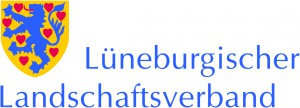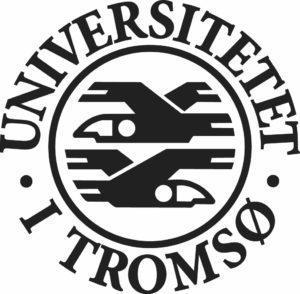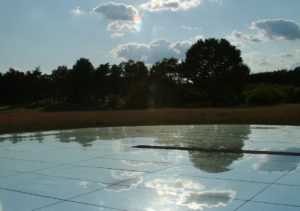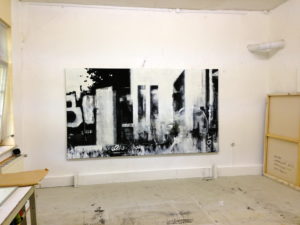With contributions from the farmers Christina and Rolf Baden from Neuenkirchen-Brochdorf, the former photographers of the Institute for Potato Breeding Groß Lüsewitz and an inspecting potato cultivation, Berlin.
Project start at the end of April / exhibition from 31 August to 13 October
For many years, Åsa Sonjasdotter has been involved in her exhibitions and projects with the relationship between people and plants. At the center of her artistic practice is always the potato as a cultivated plant with a long history, which is highly interesting both politically and socially and historically. She often cooperates with farmers, hobby gardeners, eco-activists, geneticists, urban gardening projects from all over the world in her long-term projects and refers to the conditions of the respective place. Their projects, which are divided into a wide range of disciplines, illustrate the explosiveness of the topic and point to changes in the stereotypical attributions of urban and rural areas.
In the Springhornhof she devotes herself to different aspects of potato cultivation and potato farming. It always reflects the way in which the topic is represented in our everyday life, in scientific discourses, in economic contexts, in advertising, or in historical documents.
In collaboration with the farmers Christina and Rolf Baden, who run a small farm shop in Neuenkirchen-Brochdorf, they have grown the potatoes “Adretta” and “Gala”. “Adretta” was the result of the development of a particularly robust potato cultivar, which was suitable for the agricultural and agricultural production cooperatives (LPG) in the GDR. The variety “Gala” was bred after reunification. When the GDR Institute for Plant Breeding was dissolved in Groß Lüsewitz near Rostock after the turn of the century, the former NORIKA GmbH, together with the potato processing companies of the old federal states, were founded as a partner. They continue the knowledge that the institute has built up over decades.
Photographs, drawings and texts document the German-German history of the two varieties, the cultivation, the growth, the harvest, but also the everyday life of the family Baden. In large roll containers, which are normally intended for supermarkets, “Gala” and “Adretta” are on sale.
In the space next to it, Åsa Sonjasdotter gives insights into the photo archive of the former institute for plant breeding in Groß Lüsewitz. The photographs are not only scientific documents, but also portray the institute’s staff, creating an interesting tension between ideology and everyday life. The need to breed robust varieties for a large-scale agriculture, with little chemicals available, adds a current importance to these issues.
Sonjasdotter combines various narrative strings in connection with the development of new potato varieties in the text collage “selection / recollection” on the upper floor. The facts come from the source material, which is spread out in a showcase. The chronicle begins with the Russian Revolution. Places of interest are Russia, Hungary, South Africa, Peru, Great Britain or Groß Lüsewitz. The genetic development of the globally prevalent basic food potato is linked to political ideology, personal destinies, economic interests, licensing rights and individual experiments.
The installation “An Examining Potato Breeding” continues this story. Diaserien document three year cycles of the same name project on a fallow in the middle of Berlin. Here, gardeners, artists and interested people try to build on old knowledge and experiment with a great variety of different shapes, colors, qualities and aromas.
We would like to thank the Land of Lower Saxony, the Lüneburger Landschaftsverband and the Volksbank Lüneburger Heide for the promotion of the exhibition and accompanying program.



We would also like to thank the Kulturhistorischen Verein Groß Lüsewitz eV, the University of Tromsø, the Office for Contemporary Arts Norway, Heidesand Raiffeisen-Warengenossenschaft eG, Norika GmbH and the Princess Gardens at Moritzplatz Berlin for the friendly support of the exhibition.

biography
Åsa Sonjasdotter is a professor at the Academy of Contemporary Art in Tromsø, where she was involved in 2007. She studied in Copenhagen / DK and Trondheim / N. In the 1990s she was the founder of “Women Down the Pub”, a feminist art and action group.
Selected projects: The Way Potatoes Go II (The Politics and Pleasures of Food, Hall 14, Leipzig, 2013); Rooting, Regional Networks, Global Concerns (Sullivan and Betty Rymer Galleries, Chicago, USA, 2013); The Way of Potatoes (The Worldly House, dOCUMENTA (The World of House, 13), The Order of Potatoes (Sweden, 2011), The Way Potatoes Go (EATLACMA, LACMA, Los Angeles, USA, 2010), Small Potatoes Make Big Noise (4th Bucharest Biennale, Romania, 2010) ); The Way Potatoes Go, The Gatherers: Greening Our Urban Spheres, Yerba Buena Center for the Arts, San Francisco, USA, 2008), Tea Pavilion (3rd Guangzhou Triennial, Guangzhou, China, 2008), Sharing the Knowledge (Konsthall C, Stockholm Sweden, 2007); Reconstructing supplies (Kunsthalle Exnergasse, Vienna, Austria, 2007); Impossible India (Frankfurter Kunstverein, Germany, 2006); On Mobility (Muscarnok, Budapest, Hungary and De Appel, Amsterdam, Netherlands, 2006).
 Valerij Bugrov,
Valerij Bugrov,
